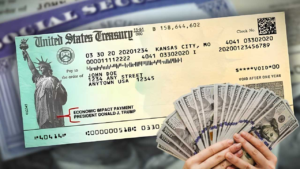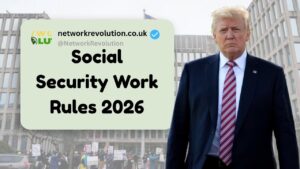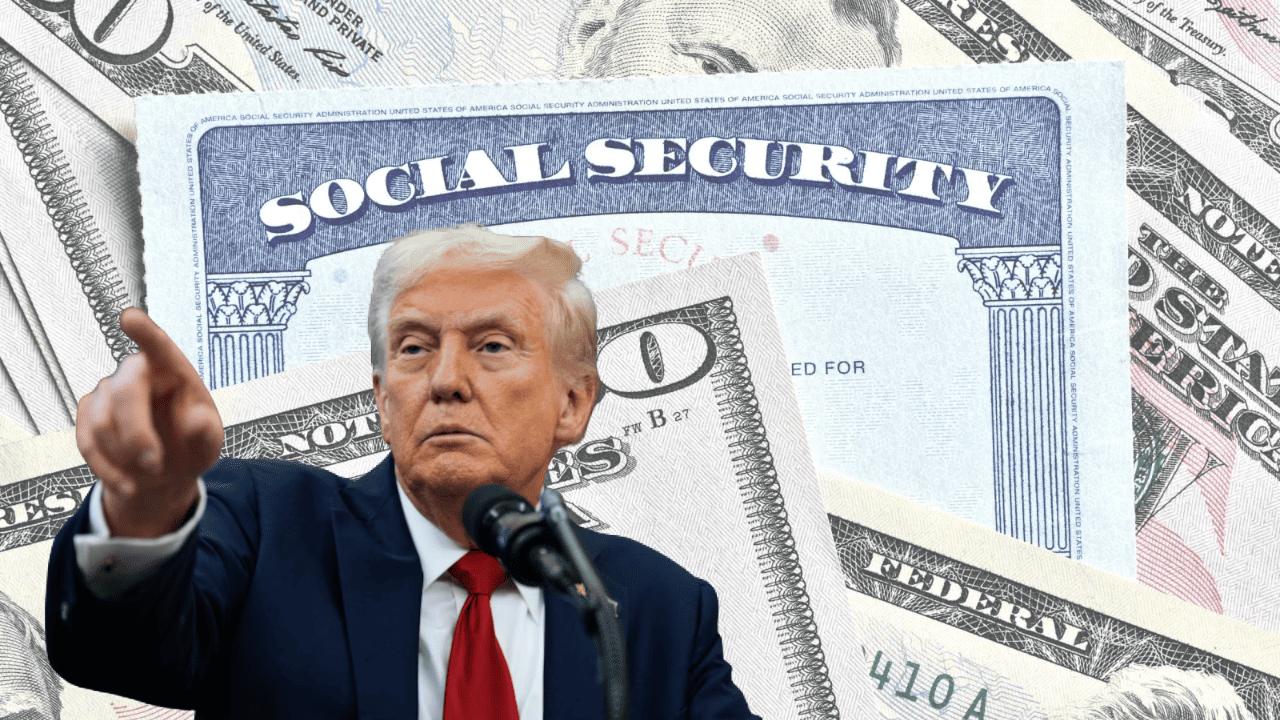For nearly a century, that pale-green paper check bearing the U.S. Treasury seal stood for more than money — it represented security, trust, and continuity.

And until recently, the federal government was ready to retire it forever.
After September 30, 2025, the Social Security Administration (SSA) had declared it would end all paper benefit checks, completing the nation’s shift to fully electronic payments. But as the deadline passed, something unexpected happened: the government quietly changed course.

What was billed as the end of an era has become a reluctant pause — an acknowledgment that modernization must make room for those who still rely on the old ways.
A Near Goodbye to Paper
The push to end paper checks began with a March 2025 executive order signed by President Trump, instructing federal agencies to phase out paper payments “to the extent permitted by law.”

Officials framed it as a modernization move — cleaner, faster, cheaper, and safer.
The numbers seemed to back that up:

- A paper check costs the government about 50 cents to print and deliver.
- A direct deposit costs around 15 cents.
- And according to Treasury data, paper checks are 16 times more likely to be lost or stolen than electronic deposits.
By September 2025, 99.4% of the nation’s 69.5 million beneficiaries had already switched to direct deposit or the Direct Express® debit card, a prepaid card for those without bank accounts.

That left about 0.6% — roughly 400,000 people — still receiving paper checks each month.
A small number, statistically speaking, but in human terms, it represented some of the nation’s most isolated and vulnerable citizens.
The Forgotten 400,000
The remaining paper-check recipients are largely seniors living in rural towns, small cities, and underserved communities — people for whom digital banking simply isn’t feasible.
California leads with around 43,000 paper check recipients, followed by Texas (28,000) and Florida (24,000).
“They lack the money to open bank accounts, maintain minimum balances, and pay bank fees,” said Nancy Altman, president of Social Security Works. “For many, paper checks aren’t nostalgia — they’re necessity.”
Some recipients live in nursing homes or assisted living facilities. Others struggle with limited literacy or memory conditions that make managing online accounts impossible.
To them, the check isn’t a relic of the past — it’s a lifeline that arrives in the mail like clockwork.
A Quiet Reversal
Then came the surprise.
After months of official warnings that September 30 was the “final date” for paper checks, the SSA quietly posted an update on September 19, just 11 days before the supposed cutoff.
“If you have no other way to receive payments, we will continue to issue paper checks,” the agency wrote on its official blog. “There are no plans to pause any payments starting October 1.”
In plain English: no one’s losing their benefits.
Weeks later, Matthew Bilenki, SSA’s Director of Finance and Management, confirmed the policy during an October meeting of the Financial Literacy and Education Commission.
“We will continue issuing checks for beneficiaries who lack access to banking or digital options,” he said.
It wasn’t a full reversal, but a quiet retreat — one that many see as a rare moment of bureaucratic compassion.
The Digital Divide, Laid Bare
The government’s hesitation underscores a deeper problem: America’s digital divide isn’t closing as quickly as policymakers hoped.
According to AARP, roughly 22 million seniors still avoid or cannot access online banking. For many, it’s not about unwillingness — it’s about capability. Some lack reliable internet. Others distrust digital systems after years of scams and data breaches.
Advocates have long warned that a full cutoff could unintentionally cut off benefits for the most vulnerable.
“We support modernization,” said an AARP analyst, “but not at the expense of accessibility. If even one senior can’t get their benefits because of a tech issue, that’s a failure.”
By softening its stance, the SSA seems to have heard that message loud and clear.
What Seniors Can Do Now?
While the agency isn’t reversing course completely, it’s slowing the transition and offering three clear pathways for recipients:
| Option | Description | How to Enroll |
|---|---|---|
| Direct Deposit | Deposits benefits directly into a checking or savings account. | Enroll via mySocialSecurity or call your local SSA office. |
| Direct Express® Debit Card | A prepaid debit card for those without bank accounts. | Visit usdirectexpress.com or call 1-800-333-1795. |
| Hardship Waiver (Exemption) | For people unable to use electronic payments due to disability or lack of access. | Call the U.S. Treasury Helpline at 1-877-874-6347. |
SSA now includes an informational insert with every paper check explaining these options. Agency representatives are also calling and mailing beneficiaries to help them transition — but only if they want to.
The Symbolism: Efficiency vs. Empathy
For policymakers, the debate over paper checks isn’t about nostalgia — it’s about equity.
Electronic payments are undeniably faster and cheaper. The Treasury estimates it could save hundreds of millions of dollars annually by eliminating paper checks. But for the 400,000 Americans left on the margins, those savings come with risks: delayed benefits, lost payments, and even loss of independence.
The paper check, in that light, has become more than a delivery method — it’s a symbol of reliability in an increasingly digital world.
“Digital transformation must be inclusive,” said Matthew Bilenki. “Modernization can’t leave anyone behind.”
The Treasury Department and SSA are now expected to release a revised “phase-out timeline” in early 2026, one that accounts for hardship exemptions and digital accessibility efforts.
Fact Check
| Claim | Verdict | Explanation |
|---|---|---|
| The SSA ended all paper check payments as of September 30, 2025. | Partly False | While the SSA initially planned to end them, it later confirmed that paper checks will continue for recipients without digital access. |
| Beneficiaries must switch to direct deposit or Direct Express immediately. | False | There’s no hard cutoff date. Seniors can continue receiving paper checks if eligible. |
| Payments were delayed or canceled after the deadline. | False | No disruptions occurred. All Social Security and SSI payments continued as scheduled. |
Official confirmations are available through SSA Blog updates and the U.S. Treasury’s Fiscal Service communications.
The Bigger Picture
This episode may appear bureaucratic, but it reflects something larger: the tension between technology and humanity in public policy.
Digital systems can make government leaner and safer. But public trust — especially among older Americans — depends on something deeper than efficiency: consistency.
The paper check may eventually fade away. But for now, it endures — a small, tangible promise that the federal government still knows how to keep a commitment, even in ink.
FAQs
Are Social Security paper checks completely gone?
No. They continue for recipients who qualify for hardship exemptions or lack access to digital payment options.
Can I still switch to direct deposit?
Yes. You can update your payment method anytime through your mySocialSecurity account or by calling your local SSA office.
What happens if I can’t access banking or the internet?
You can request a hardship waiver to continue receiving paper checks.
Was there any interruption in benefits after the September deadline?
No. All payments went out as usual, and SSA confirmed no suspensions or delays.

